|
� |
Bel�m
is a monument to Portugal's seafaring past.� From this site
Portugal's greatest explorers such as Prince Henry the Navigator,
Batholomeu Dias, and Vaso da Gama set out to discover the world.�
This district in the suburbs west of downtown Lisbon houses a UNESCO
World Heritage site featuring the Tower of Bel�m and the Monastery
of the Hieronymites.� To get there you simply hop the train for
the short ride to the Bel�m train station.
�
The Torre de Bel�m,
or Bel�m Tower, is a fortified tower built in the early 16th Century
to commemorate Vasco da Gama's expedition around Africa to India.�
The tower, 35 meters high, features four stories and a terrace
offering views of the banks of the Tagus.
The Monastery of the Hieronymites, was built in the 16th Century and
took 50 years to complete.� The monastery is an example of
Manueline architecture and features ornate facades and grandiose
interiors.
Next to these two World Heritage masterpieces lies the Monument to
the Discoveries, or the Padr�o dos Descobrimentos.� This 52
meter high monument was designed in the shape of a ship's bow.�
It was built for the Portuguese World Fair in 1940, and commemorates
the 500th anniversary of the death of Henry the Navigator.�
Henry is featured prominently at the front of the monument, looking
out over the river.�
 |
Torre de Bel�m
extending out into the Tagus |
 |
Prince
Henry is at the forefront of the statues on the Monument to
the Discoveries |
 |
Looking west
along the banks of the Tagus |
 |
Glancing
across the Tagus to the Monument to Christ statue
|
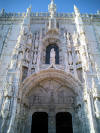 |
Ornate facade
of the Monastery of the Hieronymites.� |
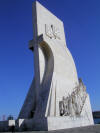 |
The back
of the Monument to the Discoveries forms a sword |
 |
Torre de Bel�m
|
 |
Long front
of the Monastery of the Hieronymites |
 |
Statuettes
adorning the Monastery of the Hieronymites |
 |
Sarcophagus in the monastery |
 |
Spacious
interior of the monastery |
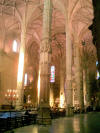 |
High
vaulted ceilings in the Monastery of the Hieronymites |
After you've had your
fill of the UNESCO World Heritage sites, stop by the line of cafes
across from the train station.� Portugal, like many European
cities, is proud of its cafe tradition.� These cafes feature a
uniquely Portuguese treat -- pasteis de nata, or custard cream tarts
with a slightly burnt crust on top and sprinkled with cinnamon.�
These sweet bite-sized morsels are a Portuguese institution, akin to
American apple pie or German apfel-strudel.�
If there's one cafe to go to in Portugal, it is the Antiga
Confeitaria de
Bel�m.� This is
the place that invented the pasteis de nata, and usually sells
10,000 tarts a day.� Enjoy these pastries in the cavernous
rooms featuring 17th century tiles, but be warned -- it's always
difficult to find an empty table, so you have to be fast at spotting
people leaving.
 |
Bel�m
Train Station |
 |
Monument to the
Discoveries |
 |
Bel�m
Tower |
 |
Monosteiro dos Jeronimos
(Monastery of the Hieronymites) |
 |
Tropical Garden |
 |
Bel�m
Palace |
View Larger Map
�
|
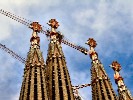 bARCELONA bARCELONA
Barcelona is the
ideal destination for tourists looking for a bit of sun,
history, seafood, architecture, and an excellent nightlife.�
Read our vacation and travel tips on what to see and do in
about this exuberant, vibrant city!
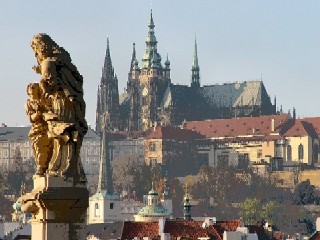 Prague Prague
Visit Europe's "Golden City" and
experience the magical quality of Prague's
medieval buildings and Gothic spires.� This well preserved
European capital is a feast for the eyes.
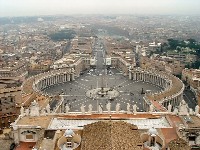 VATICAN
CITY VATICAN
CITY
Wander through the tiny papal enclave in the heart of Rome which
today comprises the world's smallest country.
 VIENNA VIENNA
The capital city of Vienna is filled with
history.� From the grand palaces to its baroque churches on its
wide boulevards, this city echoes its past as the home of the
Hapsburgs and at the helm of the Austro-Hungarian Empire.
|
Moving to Germany?�
Look at out our tips! |
 Moving
to Germany Moving
to Germany
Whether you are a member of the US Air
Force, Army, or Navy, check out our guide to moving to Europe.�
� |
|
|
|
� |